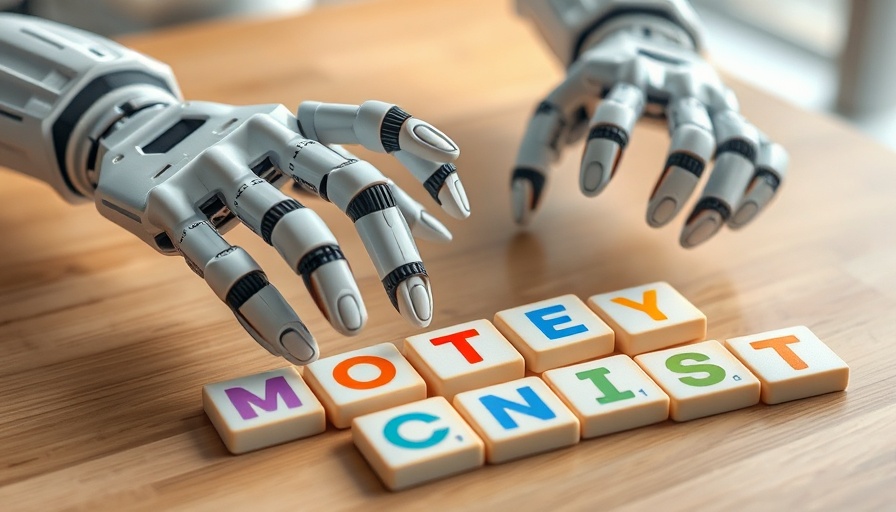
Revolutionizing Robotics: An AI Perspective
In the rapidly evolving landscape of artificial intelligence, Google’s new Gemini Robotics models promise to push the boundaries of what's possible. The introduction of AI that can physically interact with its environment brings us closer to a future where humanoid robots could assist us in daily tasks, from household chores to intricate manual work. With AI like Gemini taking center stage, there are profound implications for both the technology at hand and society's relationship with the machines intended to serve us.
The Rise of Gemini Robotics
Earlier this week, Google DeepMind unveiled two cutting-edge models, Gemini Robotics and Gemini Robotics-ER, grounded in the powerful Gemini 2.0 framework. These AI models are designed to tackle multifaceted tasks through a combination of advanced vision, language understanding, and embodied reasoning capabilities.
The core advantage of Gemini Robotics lies in its unique ability to conduct real-time physical actions based on natural language commands. This reflects a significant leap from conventional AI applications that typically focus on data interpretation, marking a transition toward integrating artificial intelligence in our physical environment.
Gemini Robotics enhances robots' capabilities to adapt to various scenarios, enabling them to perform tasks they haven't been specifically trained for. For instance, in demonstration videos released by Google, robots effortlessly zipped up bags, filled lunchboxes, and plugged appliances into power sources, all in response to spoken directives. This adaptability is the hallmark of a new generation of AI that bridges the gap between virtual solutions and physical reality.
Why Embodied Reasoning Matters
One of the standout features of Gemini Robotics-ER is its embodied reasoning capability. This means that robots can better comprehend and react to their surrounding environments much like humans do. This ability is crucial as it allows robots to carry out tasks more intuitively and safely, making them suitable for real-world applications.
Google asserts that the efficacy of these new robotic models depends on three fundamental qualities: generality, interactivity, and dexterity. The robots must be able to navigate diverse environments, interact seamlessly with humans, and perform complex manipulations. For example, tasks such as folding origami or precisely packing items into a container are noted as benchmarks for dexterity that these robots can now achieve.
Potential Impact on Daily Life
The implications of introducing such sophisticated robotics into everyday life are vast, potentially touching upon various aspects of human interaction, labor, and lifestyle. As AI models become more integrated into physical systems, we might begin to see robots serve as companions or helpers, fundamentally altering our daily routines.
As Google collaborates with Apptronik, a Texas-based robotics firm, the groundwork is being laid for the next generation of humanoid robots. With increased funding and joint efforts to develop these AI systems, society may soon be entering an era where human-like robots become commonplace, facilitating tasks previously deemed too complex for machines.
Ethical Considerations in AI and Robotics
However, the advancement of AI robotics raises significant ethical questions. With great power comes great responsibility, and there are concerns about safety, data privacy, and the implications of having machines capable of making autonomous decisions. Google's approach to ensuring these robots operate safely in real-world environments includes rigorous testing and the development of ethical guidelines akin to Isaac Asimov’s Three Laws of Robotics.
This commitment to responsible development is crucial as we contemplate the future of robotics within society. The prospect of machines that can learn and adapt opens up debates about authorship, accountability, and the nuanced relationship between humans and robots.
Conclusion: A Future with Humanoids
As technology continues to advance, AI models like Google’s Gemini Robotics will become integral to our interaction with machines. Understanding and engaging with this technology now is crucial for AI enthusiasts and the general public alike as we prepare for a future where robots are not just tools but partners in our daily lives. As we look ahead, embracing this technological evolution will shape our experiences and expectations of artificial intelligence moving forward.
 Add Row
Add Row  Add
Add 




Write A Comment